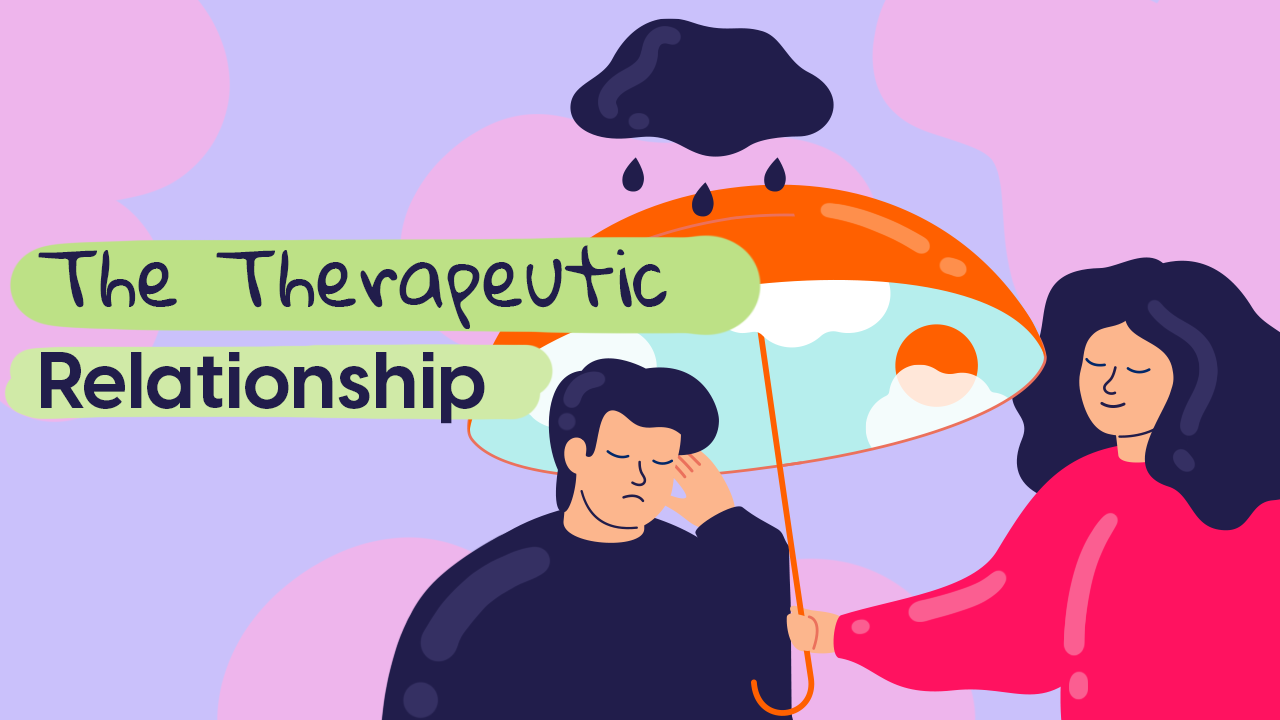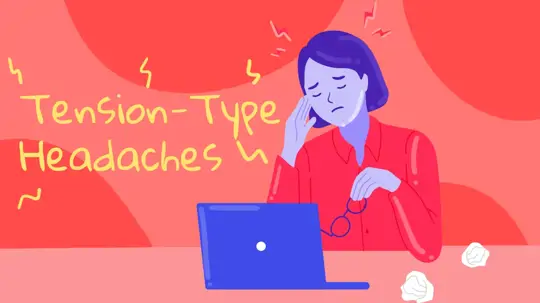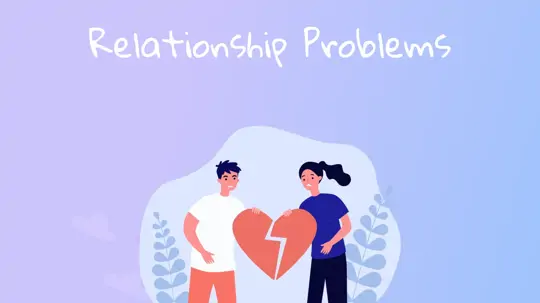
Start feeling better today!
Connect with your therapist today and take control of your life like our 850.000 happy clients.
Get StartedWhat is a Therapeutic Relationship?
Psychotherapy is a process in which the therapist helps the client in order to change their behaviors, thoughts, feelings, and some personal characteristics of the client at the desired level within the framework of the principles of psychology1.
However, this change may not always be as easy as it is thought to be. At this point, it is of great importance that face-to-face or online therapy sessions, in which the client shares their thoughts, beliefs, feelings, and difficult experiences, are in an environment where a safe, sincere, empathetic approach and unconditional acceptance prevail2.
In order for this environment to be created, there must be a unique relationship between the therapist and the client, a human bond based on professional ethical boundaries. This bond is called a therapeutic relationship3.
The Importance and The Boundaries of A Therapeutic Relationship
What is a Therapeutic Relationship? What is the significance of the therapeutic relationship? In a study, it was stated that regardless of the therapy approach (Psychoanalytic therapy, Schema therapy, Problem Solving therapy etc.) used, the therapeutic relationship is one of the most important factors that determine the quality and efficiency of therapy4.
In other words, regardless of the approach used by the therapist, if a therapeutic relationship is not established, it is not possible to talk about a healing therapy process.

What is a Therapeutic Relationship?
A therapeutic relationship defines the relationship between a therapist and a client, and it is also a tool that helps the client to distinguish and define their problems and to be actively involved in the therapy process5. However, in order for the client to do these without any hesitation, there must be certain boundaries that protect the therapeutic relationship within the framework of ethical rules. Some of them are as follows6:
In the therapy process, everything that is said should be kept confidential between the client and the therapist, except for the possibility of harming oneself or another person, or an order from legal authorities. When the confidentiality principle will be broken, such as when a client is having suicidal thoughts or when a court order says so, the client should be told first and should give verbal and written consent.
In addition, the therapist must inform the client on matters such as the length of sessions, when they start and end, how much they cost, the therapy approaches and techniques used, and the rules of confidentiality. They should explain anything that isn't clear. If both sides agree to the rules, the sessions should begin, and the rules should be followed by both sides throughout the process.
In addition, the relationship between the client and the therapist is different from the relationships in our social lives and should be limited to the therapy room. It is not an appropriate approach for the therapist to give therapy to close friends, family members, or people with whom they have business relationships, as it increases the possibility of harming the process and breaking the confidentiality principle. So, the therapist shouldn't make social connections (like friendships, romantic relationships, or business connections) with clients during or after the sessions.
Requirements For The Therapeutic Relationship
From different studies, we've put together a list of the most important parts of a good relationship between a therapist and a client:
- Therapeutic Communication
- It is the process of the therapist and client interacting with each other in verbal and non-verbal ways. The aim is to get to know the client in mutual trust, to enable them to express their feelings and thoughts clearly, to reveal their needs, and to help them cope with their problems7.
- Therapeutic Alliance
- It is the agreement between the client and the therapist about the goals and methods for the course of therapy, and the client cooperates with the therapist to solve their problems8.
- Empathy
- It is the therapist's ability to see the events from the client's point of view, to make sense of their feelings and motivation, and to convey this to the client2, 8, 9.
- Sincerity
- Sincerity means that both the client and the therapist can be themselves and be true to who they are in order to build a real relationship in the therapy space.2, 8.
- Unconditional Acceptance
- Unconditional acceptance means that the therapist sees every aspect of the client as they are and accepts the client as a separate individual with all their traits without judgment2, 8.
- Transparency and Openness Principle
- This principle implies that the therapist acts sincerely and honestly in order to create a space where the client can express themselves openly9.
- Respect
- Respect means that the therapist respects the client's life, personality traits, needs, wishes, values, and beliefs under all circumstances9.
- Being Supportive
- It means highlighting the capacity and internal resources of the client under all circumstances and encouraging them to be implemented9.
- Being Present
- Being present means clearly handling the feelings and thoughts that occur as a result of the interaction between the therapist and the client during the session and associating them with the client's life outside of therapy6.
- Disclosure
- Within ethical boundaries, disclosure is the statement of the therapist's own thoughts, feelings, and experiences to the client when the therapist thinks it may be in the client's best interest8.

Is Online Therapy an Obstacle to Form A Therapeutic Relationship?
A meta-analysis on the effectiveness of online therapy found that online therapy is not much different from face-to-face therapy in terms of the therapeutic relationship10. In other words, after the therapeutic relationship is established, whether the therapy is online or face-to-face makes no difference in terms of effectiveness.
Sources
- Norcross, J. C. (1990). An eclectic definition of psychotherapy. In J. K. Zeig & W. M. Munion (Eds.), What is psychotherapy? Jossey-Bass.
- Rogers, C. R. (1957). The necessary and sufficient conditions of therapeutic personality change. Journal of Consulting Psychology, 21.95–103
- Prochaska, J., & Norcross, J. (2014). Systems of psychotherapy: A transtheoretical analysis. Cengage Learning.
- Bergin, A. E., & Lambert, M. J. (1978). The evaluation of therapeutic outcomes. In S. L. Garfield & A. E. Bergin (Eds.), Handbook of psychotherapy and behavior change (2nd ed.). Wiley.
- Doganavsargil, Ö., & Vahip, I. (2003). Why is therapeutic collaboration important? A domestic violence case "without" psychiatric complaints. Journal of Clinical Psychiatry, 6(3), 165-169.
- Egan, G. (2011). Counseling Skills. Kaktüs Publications.
- Ay, A. F. (Ed.). (2013). Basic concepts and skills in health practice. Nobel Medical Bookstores.
- Norcross, J., N., & Lambert, M., J., (2018). Psychotherapy relations that work III. Oxford University Press.
- Dziopa, F., & Ahern, K. What makes a quality therapeutic relationship in psychiatric/mental health nursing: A review of the research literature. The Internet Journal of Advanced Nursing Practice, 10(1), 1-9.
- Barak, A., Hen, L., Boniel-Nissim, M., & Shapira, N. A. (2008). A comprehensive review and a meta-analysis of the effectiveness of internet-based psychotherapeutic interventions. Journal of Technology in Human Services, 26(2-4), 109-160.





